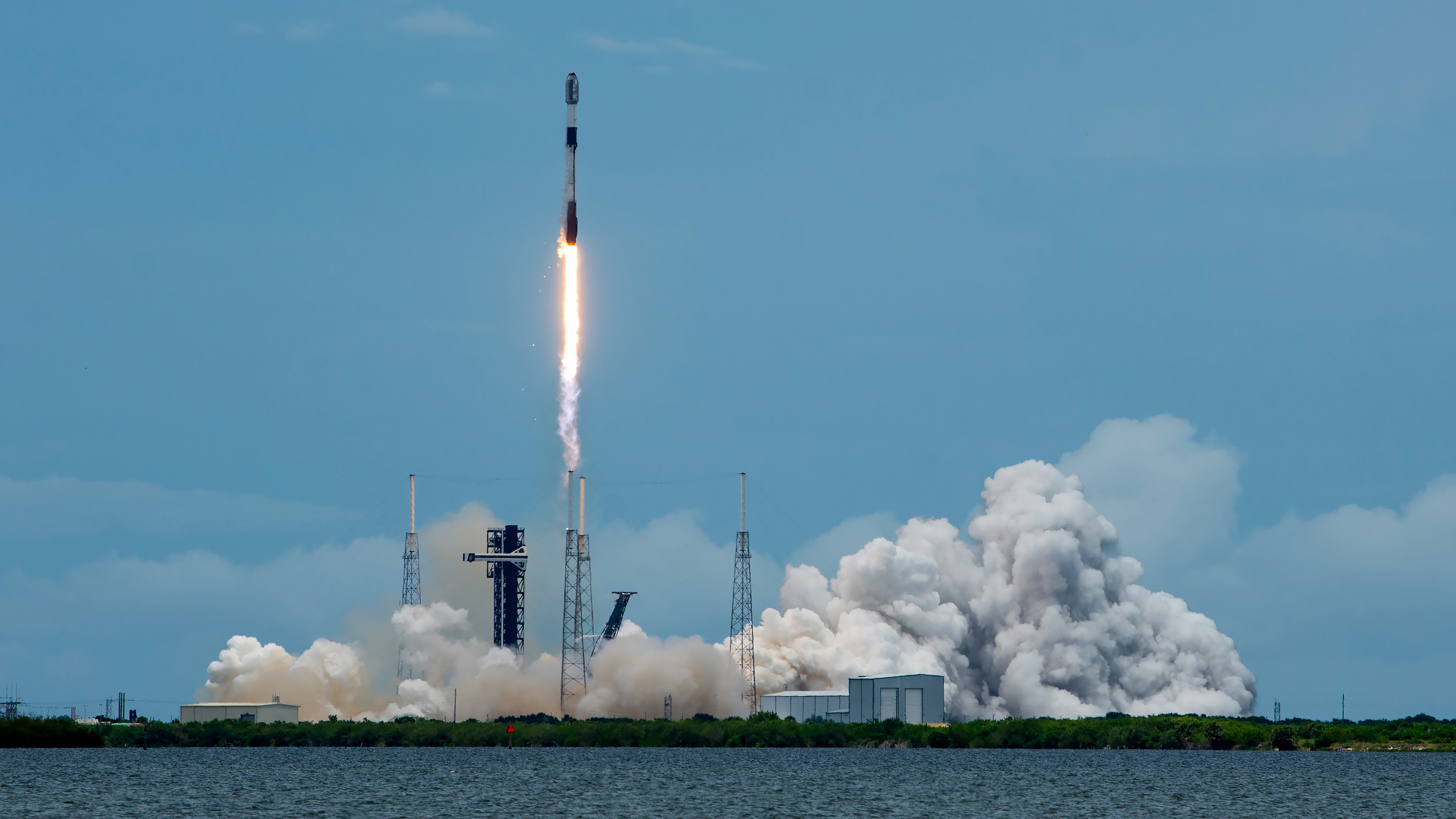SpaceX launches Starlink missions in spaceflight doubleheader (video, photos)
SpaceX pulled off another spaceflight doubleheader on Sunday (June 23).
The company launched two batches of its Starlink internet satellites Sunday, sending them aloft atop Falcon 9 rockets from both U.S. coasts.
The first leg kicked off at 1:15 p.m. EDT (1715 GMT), when a Falcon 9 topped with 22 Starlink craft lifted off from Cape Canaveral Space Force Station in Florida. The second rocket, carrying 20 Starlinks — including 13 with direct-to-cell capabilities — launched from California's Vandenberg Space Force Base at 11:47 p.m. EDT (8:47 p.m. local California time; 0347 GMT on June 24).
Both Falcon 9 first stages landed on SpaceX droneships in the ocean shortly after liftoff, as planned.
Sunday's launches were the 63rd and 64th orbital flights of the year for SpaceX, and the 45th and 46th of 2024 dedicated to building out the Starlink megaconstellation in low Earth orbit. The huge and ever-growing network currently consists of more than 6,100 operational satellites.
Launch doubleheaders have become somewhat commonplace for SpaceX. On May 22, for example, the company launched the NROL-146 mission for the U.S. National Reconnaissance Office from Vandenberg and a Starlink batch from Cape Canaveral.
SpaceX then followed up with another Starlink launch the very next day, from NASA's Kennedy Space Center, which is next door to Cape Canaveral Space Force Station.
Breaking space news, the latest updates on rocket launches, skywatching events and more!

Michael Wall is a Senior Space Writer with Space.com and joined the team in 2010. He primarily covers exoplanets, spaceflight and military space, but has been known to dabble in the space art beat. His book about the search for alien life, "Out There," was published on Nov. 13, 2018. Before becoming a science writer, Michael worked as a herpetologist and wildlife biologist. He has a Ph.D. in evolutionary biology from the University of Sydney, Australia, a bachelor's degree from the University of Arizona, and a graduate certificate in science writing from the University of California, Santa Cruz. To find out what his latest project is, you can follow Michael on Twitter.


